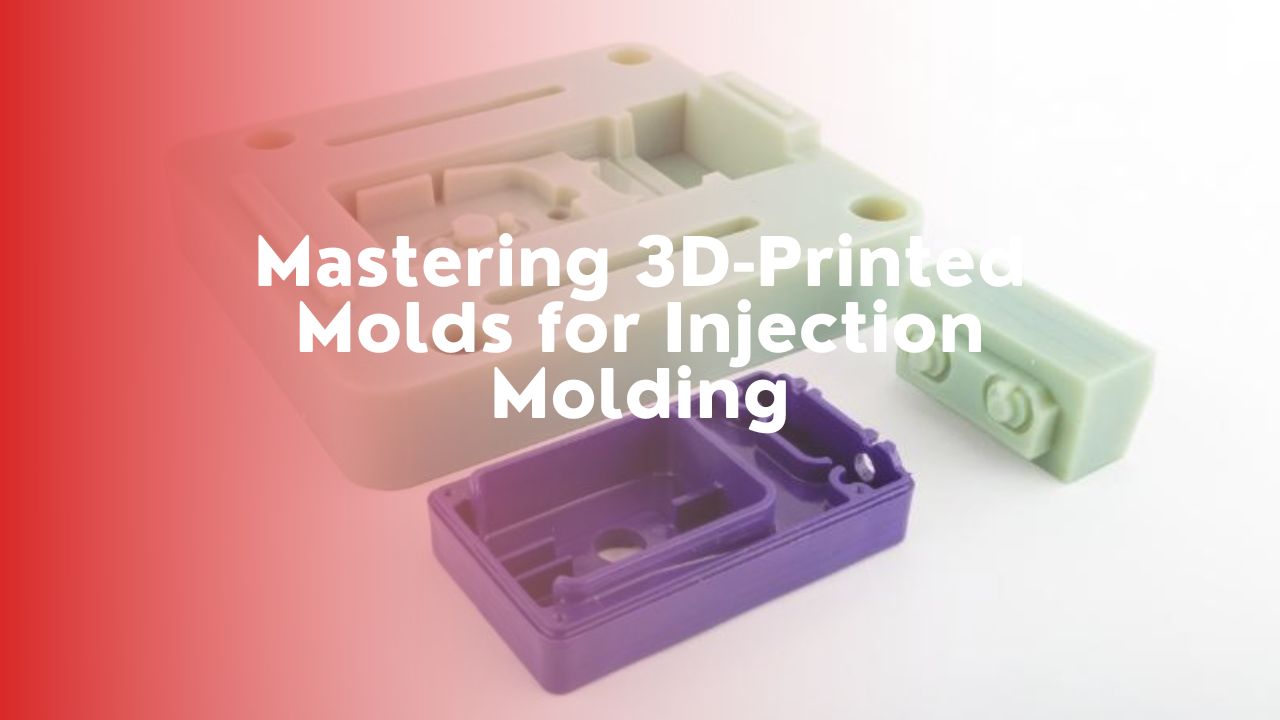Introduction
In the realm of injection molding, metal molds have long been the go-to for mass-producing precise plastic parts. Yet, with the rise of 3D printing, a novel approach to mold creation has emerged, promising quicker development cycles and cost savings. This guide delves into the transformative impact of 3D-printed molds on the injection molding industry, offering an alternative to conventional methods.
Steps to Crafting a 3D-Printed Mold for Injection Molding
1. Designing the CAD Blueprint
The journey begins with crafting a meticulous CAD (Computer-Aided Design) model. This step demands attention to material and design specifics, ensuring both functionality and manufacturability. Factors like material flow, cooling rates, and ejection mechanisms are paramount considerations.
2. Exporting the CAD Design File
Once the design is polished, it’s time to export it into a 3D printing-friendly format like STL or OBJ. This file serves as the blueprint guiding the 3D printer to bring the mold’s geometry to life.
3. Bringing the Mold to Life with 3D Printing
Select from various 3D printing technologies—be it FDM (Fused Deposition Modeling), SLA (Stereolithography), SLS (Selective Laser Sintering), or DLP (Digital Light Processing)—based on precision requirements and mold material properties. Each technology boasts unique strengths, catering to differing complexities and production runs.
4. Integrating the Mold into a Metal Frame
Post-printing, the mold finds its home within a sturdy metal frame. This frame provides structural support, enabling the 3D-printed mold to withstand the rigors of the injection molding process.
5. Initiating the Injection Molding Process
With the mold securely in place, the injection molding process kicks off. Molten plastic is injected into the mold cavity, where it undergoes cooling and solidification, culminating in the final part.
Pros of 3D-Printed Molds for Injection Molding
Embracing 3D-printed molds brings forth several advantages:
- Cost Efficiency: Substantial initial cost savings compared to traditional metal molds.
- User-Friendly: Simplified mold creation process, particularly suitable for prototyping and low-volume production.
- Versatility: Ease of design modifications facilitates rapid iteration and customization.
- Swift Turnaround:Shortens the design-to-production timeline, expediting project completion.
Cons of 3D-Printed Molds for Injection Molding
However, challenges abound:
- Durability Concerns: Risks of shrinkage, warping, and degradation under high temperatures.
- Size Constraints: Typically unsuitable for large parts.
- Extended Cooling Periods: May elongate production cycle times.
In-Depth Considerations for 3D-Printed Molds
Delving deeper into 3D-printed mold creation necessitates attention to:
- Material Selection: Opt for materials capable of withstanding molding processes without deterioration.
- Design Ponderings:Ensure adequate cooling and ejection mechanisms are integrated.
- Testing and Validation: Prototype and rigorously test molds to ascertain adherence to quality standards.
- Production Volume: Best suited for low to medium production volumes due to wear considerations.
Exploring Alternative Injection Molding Processes
This guide briefly touches upon alternative methodologies such as gas-assisted and metal injection molding, tailored to specific industrial demands.
Comparison with Traditional Molds
While 3D-printed molds offer economic benefits for small-scale runs, traditional metal molds remain the gold standard for high-volume, high-durability requisites owing to their extended lifespan and precision.
Summary and Further Resources
3D-printed molds emerge as a compelling choice for rapid prototyping and small-scale production. They present flexibility, cost savings, and expedited turnaround times, albeit with certain limitations. For deeper insights or project-specific guidance, consulting experts like those at Xometry is recommended.

